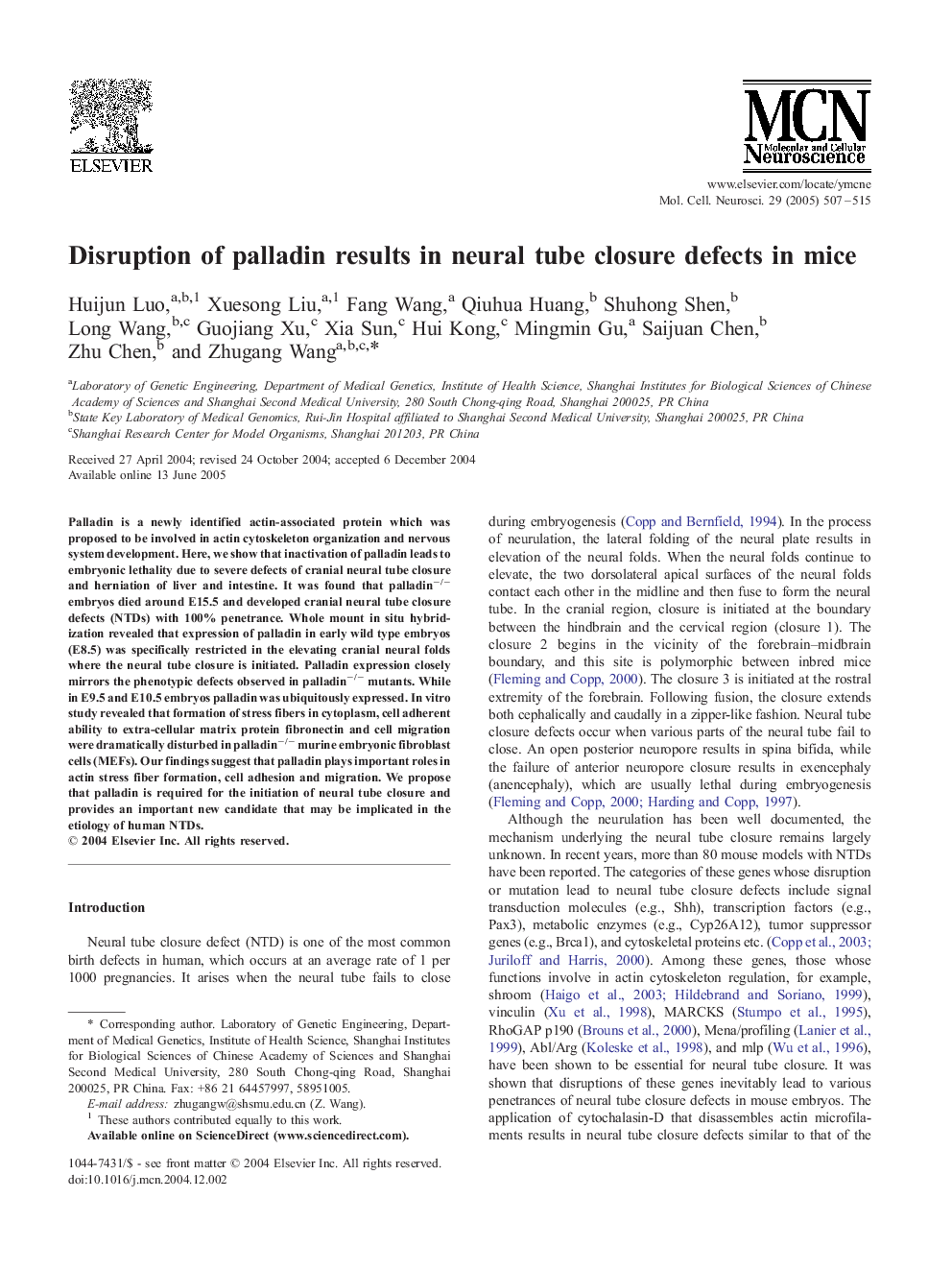| Article ID | Journal | Published Year | Pages | File Type |
|---|---|---|---|---|
| 10956853 | Molecular and Cellular Neuroscience | 2005 | 9 Pages |
Abstract
Palladin is a newly identified actin-associated protein which was proposed to be involved in actin cytoskeleton organization and nervous system development. Here, we show that inactivation of palladin leads to embryonic lethality due to severe defects of cranial neural tube closure and herniation of liver and intestine. It was found that palladinâ/â embryos died around E15.5 and developed cranial neural tube closure defects (NTDs) with 100% penetrance. Whole mount in situ hybridization revealed that expression of palladin in early wild type embryos (E8.5) was specifically restricted in the elevating cranial neural folds where the neural tube closure is initiated. Palladin expression closely mirrors the phenotypic defects observed in palladinâ/â mutants. While in E9.5 and E10.5 embryos palladin was ubiquitously expressed. In vitro study revealed that formation of stress fibers in cytoplasm, cell adherent ability to extra-cellular matrix protein fibronectin and cell migration were dramatically disturbed in palladinâ/â murine embryonic fibroblast cells (MEFs). Our findings suggest that palladin plays important roles in actin stress fiber formation, cell adhesion and migration. We propose that palladin is required for the initiation of neural tube closure and provides an important new candidate that may be implicated in the etiology of human NTDs.
Related Topics
Life Sciences
Biochemistry, Genetics and Molecular Biology
Cell Biology
Authors
Huijun Luo, Xuesong Liu, Fang Wang, Qiuhua Huang, Shuhong Shen, Long Wang, Guojiang Xu, Xia Sun, Hui Kong, Mingmin Gu, Saijuan Chen, Zhu Chen, Zhugang Wang,
